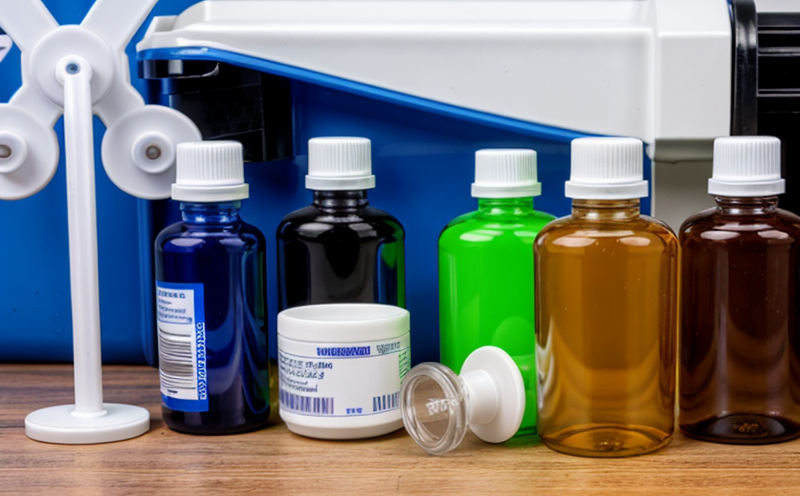EN 16219 Thallium in Pharmaceutical Waste
The European Standard EN 16219 specifies the methods for determining thallium in pharmaceutical waste. This test is crucial for ensuring compliance with environmental regulations and safeguarding public health by minimizing the release of toxic elements into the environment.
Thallium, a heavy metal known for its neurotoxic properties, can pose significant risks if not properly managed during disposal or recycling processes. Pharmaceutical waste often contains thallium in various forms, necessitating precise analytical techniques to quantify and report these levels accurately.
The standard outlines two main methods: atomic absorption spectrometry (AAS) and inductively coupled plasma mass spectrometry (ICP-MS). Each method has its strengths depending on the expected concentration range of thallium. AAS is preferred for lower concentrations, while ICP-MS offers higher sensitivity suitable for trace levels.
Specimen preparation involves careful handling to prevent contamination and ensure accurate results. This includes drying, grinding if necessary, and sieving the waste material to a uniform particle size. Digestion steps may be required using acid solutions before analysis to release bound thallium into solution form.
The testing process itself requires stringent quality control measures such as standard calibration and blank checks. Results must adhere to strict acceptance criteria laid out in the standard, typically expressed in parts per million (ppm).
Accurate and reliable measurement of thallium levels is essential for pharmaceutical manufacturers, waste management companies, and regulatory bodies alike. It helps identify potential sources of contamination, guide corrective actions, and demonstrate adherence to international standards.
- Certified Laboratories: Partnering with laboratories accredited according to ISO/IEC 17025 ensures credibility and precision in results.
- Compliance Reporting: Regular reports provide comprehensive insights into waste composition, facilitating informed decision-making processes.
- Environmental Impact Assessment: Data from this testing supports efforts towards sustainable practices within the industry.
In summary, implementing EN 16219 ensures regulatory compliance and promotes safer disposal methods for pharmaceutical waste containing thallium. By leveraging advanced analytical techniques like AAS or ICP-MS, organizations can achieve accurate quantification leading to better environmental stewardship.
Why Choose This Test
Choosing the EN 16219 Thallium in Pharmaceutical Waste test offers numerous advantages for quality managers, compliance officers, R&D engineers, and procurement professionals:
- Compliance Assurance: Ensures strict adherence to international standards ensuring safe disposal practices.
- Data Accuracy: Utilizing validated analytical methods guarantees precise measurements reducing discrepancies between reported values and actual concentrations.
- Precision in Decision-Making: Reliable data facilitates informed decisions regarding waste treatment options, recycling strategies, and environmental impact assessments.
- Enhanced Reputation: Demonstrating commitment to responsible waste management enhances corporate image among stakeholders.
The use of this standard also contributes significantly towards reducing risks associated with improper disposal methods. It promotes safer practices throughout the supply chain by providing clear guidelines on how to handle and manage thallium-containing pharmaceutical wastes effectively.
Customer Impact and Satisfaction
The implementation of EN 16219 Thallium in Pharmaceutical Waste has profound impacts on customers, particularly those involved directly or indirectly with waste management processes. Here are some ways it enhances customer satisfaction:
- Informed Decision-Making: Accurate data enables stakeholders to make informed choices about treatment methods and recycling strategies.
- Enhanced Reputation: Demonstrating adherence to international standards builds trust among customers, partners, and regulatory bodies.
- Risk Reduction: By identifying and managing thallium contamination early, risks associated with improper disposal are significantly reduced.
- Sustainable Practices: The standard promotes more sustainable waste management practices contributing positively to corporate social responsibility initiatives.
In conclusion, adopting EN 16219 not only meets regulatory requirements but also fosters a culture of environmental stewardship, ultimately enhancing customer satisfaction and loyalty within the sector.
Competitive Advantage and Market Impact
Adopting EN 16219 Thallium in Pharmaceutical Waste can provide significant competitive advantages and market impacts:
- Regulatory Compliance: Meeting stringent standards ensures compliance with international regulations, avoiding potential fines or sanctions.
- Market Differentiation: Demonstrating commitment to responsible waste management sets organizations apart from competitors, attracting environmentally conscious customers.
- Innovation Opportunities: The insights gained through accurate testing can drive innovation in waste treatment technologies and practices.
- Purchaser Confidence: Suppliers who adhere to this standard can build stronger relationships with buyers by showcasing their commitment to quality and sustainability.
The broader implication is that implementing EN 16219 contributes to a more sustainable future, benefiting not just individual organizations but also the larger market ecosystem. By leading in responsible waste management practices, companies position themselves as leaders in innovation and environmental responsibility.





